zur deutschen Version, Flagge klicken oder tippen

- possession of United Kingdom
• Flags
• Historical Flags
• Meaning/Origin of the Flag
• Coat of Arms
• Meaning/Origin of the Coat of Arms
• Map
• Numbers and Facts
• History
• Origin of the Country's Name
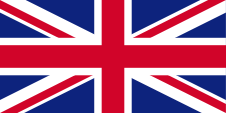
since 1801,
Union Flag → quasi national flag,
Flag of United Kingdom,
ratio = 1:2,
Source, by: Wikipedia (EN)





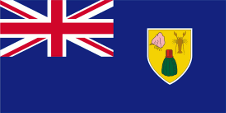
since 1999,
Flag of the government (state flag),
ratio = 1:2,
Source, by: Flags of the World






since 1999,
Merchant flag,
ratio = 1:2,
Source, by: Flags of the World



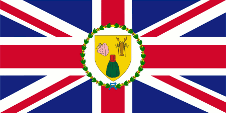
since 1999,
Flag of the Governor,
ratio = 1:2,
Source, by: Flags of the World





18th century,
Flag of France,
Source, by: commons.wikimedia.org



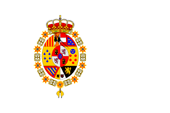
18th century,
Flag of Spain,
Source, by: World Statesmen, histor. Pix/Abbildungen




since 1801,
Union Flag → quasi national flag,
Flag of United Kingdom,
ratio = 1:2,
Source, by: Wikipedia (EN)





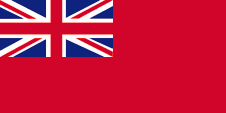
1864–1999,
Merchant flag,
ratio = 1:2,
Source, by: Flags of all Nations






1875–1889,
Flag of the government (state flag),
ratio = 1:2,
Source, by: Flags of the World




1889–1968,
Flag of the government (state flag),
ratio = 1:2,
Source, by: Flags of the World



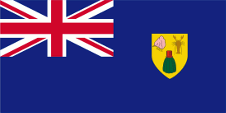
1968–1999,
Flag of the government (state flag),
ratio = 1:2,
Source, by: Flags of the World




Federation of the West Indies (1958–1962):
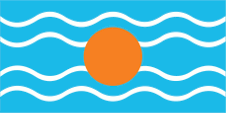
Flag of the Federation of the West Indies,
ratio = 1:2,
Source, by: Flags of the World



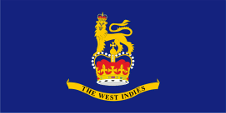
Flag of the Governor General,
ratio = 1:2,
Source, by:
Flags of the World




In the eventful history of the Turks and Caicos Islands, the ownership changed
hands several times between Spain and France, and with it the flags used here.
Englishmen (salt collectors from the Bermuda Islands) had also settled here as
early as the 17th century. England/United Kingdom last secured ownership of the
islands in 1799, so that from that year onwards its flag flew unchallenged over
the island.
From that point in time on, individuals, citizens and also
the authorities represented their status as citizens or organs of the British
nation, embodied in the United Kingdom, through the use of the Union Jack, then
called the "Union Flag". At sea, the British merchant flag, the Red Ensign, was
intended for British citizens from 1864. In a few cases, the citizens of a
colony were authorised by the Admiralty to use their own Red Ensign with the
colony's badge at sea. The Union Jack in the top corner of these flags signalled
the connection to United Kingdom.
The islands initially belonged to the
British colony of the Bahamas from 1799 to 1848, after which, from 1873 to 1959,
they belonged to Jamaica and, together with Jamaica, became part of the
Federation of the West Indies in 1958, where they remained until 1962.
United Kingdom introduced a flag system in 1864 in which:
• war ships fly
the "White Ensign" (naval flag), a white flag often with an uninterrupted red
St. George's-Cross and with the Union Jack in the upper staff quadrant of the
flag,
• merchant ships fly a "Red Ensign" (also named "Civil Ensign" →
civil flag, the real merchant flag), a red flag with the Union Jack in the upper
staff quadrant of the flag, and
• governmental ships fly the "Blue
Ensign" (flag for the use by the gouvernment → the actual state flag), a blue
flag with the Union Jack in the upper staff quadrant of the flag.
From
1865, the ships of the colonial governments were allowed to use a Blue Ensign
with a badge at the flying end. The respective governments were to provide
appropriate badges. Merchant ships and seafaring privateers from colonies were
only allowed to use a Red Ensign with a badge if the British Admiralty had
issued a corresponding licence for that colony. Such a badge was often a
regional landscape depiction on a disc, often showed ships, historical events or
could simply be a kind of logo. Very often a badge also contained the name of
the country or a motto. However, some possessions had a coat of arms from the
beginning or were given their own coat of arms over the years and the badge was
abolished. To ensure a largely uniform appearance in the flying end of the
flags, coats of arms and other symbols were displayed on a white disc in the
size of the former badges. However, there were also exceptions, as some colonies
dispensed with this white disc and placed their coat of arms or even just the
shield – sometimes enlarged – directly on the bunting. As early as the 1940s,
the white disc was removed and the coat of arms was applied directly or
enlarged. This conversion process took place gradually, nowhere simultaneously
and completely. In some British possessions flags with the white disc are still
in use today, in others no longer and in some areas both variants exist side by
side.
The Turks and Caicos Islands were given their own badge in 1875. It
showed a coastal scene with a beach in the foreground, on which a salt worker is
working with rakes and bushels in front of two piles of salt. A salt ship can be
seen in the background, taking on the precious cargo of salt, the colony's
export hit. The name of the colony appears in the lower part. The badge appears
to have been revised in 1889, but the image depicted hardly changed and was
retained until 1968, even when the islands were administratively separated from
Jamaica in 1959 and became a dissociated own colony. In 1875, a separate "Blue
Ensign" was also introduced for the islands (although under the administration
of Jamaica) as the state flag at sea, a dark blue bunting with a flag depiction
– the British Union Jack – in the upper corner, which showed the badge in the
flying end of the flag.
From 1958 to 1962 the territory was – initially
as part of Jamaica – also part of the British colony "Federation of the West
Indies". This political project was an attempt to unify the administration and
to create a state modelled on Canada, but also to counteract the independence
efforts of the associated islands and colonies. However, jealousies arose
between the large and small islands and even led to open dispute. The flag of
the "Federation of the West Indies" was a light blue flag with four horizontal
white wavy lines and a golden disc in the middle. It symbolized the sun over the
Caribbean Sea. There is some doubt about the color of the blue; it is often
assumed to be the usual British heraldry blue. However, a contemporary
description calls it an "imperial blue" which would be light blue and many
contemporary prints also show this light blue.
From 1959, the Turks and
Caicos Islands were a dissociated own colony, albeit under an administrator, the
Governor of Jamaica, who was also Governor of the Turks and Caicos Islands from
1962. Between 1965 and 1973 there was again an administrator, the Governor of
the Bahamas. When the Bahamas became independent in 1973, the Turks and Caicos
Islands were given their own governor. From 1986 to 1988 and from 2009 to 2012,
the islands were administered directly from London via the Governor due to legal
difficulties. The Governor has only had its own flag since 1999.
In 1968,
the badge was abolished and from that year the shield of the coat of arms
awarded in 1965 was used on the "Blue Ensign", the flag of the government at
sea. It shows a cowrie shell, a lobster and a Turk's Cap Cactus (Melocactus intortus).
From 1999, the size of the shield was increased to half the height of
the flag and was surrounded by a white border.
In 1999, the local
authorities introduced their own "Red Ensign", a red bunting with a flag
representation – the British Union Jack – in the upper corner, showing the
escutcheon of the islands in the flying end of the flag. An approval from the
Admiralty is reportedly still pending, but this flag is displayed by the British
Ministry of Defence in its publication "Flags of all Nations" (a service
regulation).
The Union Flag is actually the national and state flag on
land. Since 1999, the "Blue Ensign" (actually the state flag at sea) with the
escutcheon of the islands in the flying end may also be used on land as the
national flag for decorative purposes if the governor has authorised this, and
for a limited period of time, e.g. at an event (including outside the country)
or also for differentiation if the use of the Union flag would be inappropriate
or likely to cause confusion. On land, however, the aspect ratio of the flag should be 3:5.
Source:
Flags of all Nations,
World Statesmen,
Flags of the World,
Wikipedia (EN),
Volker Preuß

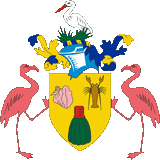
since 1965,
Coat of arms of the Turks and Caicos Islands,
Source, by: Wikipedia (EN), Corel Draw 4
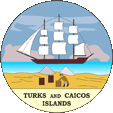
1875–1889,
Badge of the Turks and Caicos Islands,
Source, by: Flags of the World
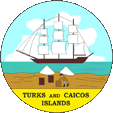
1889–1968,
Badge of the Turks and Caicos Islands,
Source, by: Flags of the World

The coat of arms of Turks and Caicos Islands shows a golden escutcheon, on it a pink true conch, a lobster and a Turk's Cap Cactus (Melocactus intortus). Above a silvery helmet with golden blankets, on the helmet Sisal plants and a pelican, to the left and on the right per one flamingo as supporters. The coat of arms was awarded to the islands on 26th of September in 1965. In the years before was used the in 1875 introduced badge. It showed a coastal scene with a beach in the foreground on which a Saltworks worker is engaged with a rake and bushels in front of two piles of salt. A salt ship can be seen in the background, taking on the precious cargo of salt, the colony's top export. The name of the colony appears in the lower part. The badge seems to have been revised in 1889, but the image depicted hardly changed and was retained until 1968, even when the islands were administratively separated from Jamaica in 1959 and became an independent colony.
Source:
Flags of the World,
Wikipedia (EN),
Volker Preuß

Location:

Source: Freeware, University of Texas Libraries, modyfied by: Volker Preuß
Map of the country:

Source: CIA World Factbook

Area: 238 square miles
Inhabitants: 47.720 (2022), thereof 90% Blacks, 8% Europeans, 2% Mulattos
Religions: 73% Protestant, 11% Roman Catholic
Density of Population: 201 inh./sq.mi.
Capital: Cockburn Town (on Grand Turk Island), 3.720 inh. (2016)
official Language: English
other Languages: local English Creole dialect
Currency: 1 US-Dollar (USD, $) = 100 Cents
Time Zone: GMT – 5 h
Source: Wikipedia (D)

12th of October 1492 · probably discovered by the Spanish seafarer Christoph Columbus
1513 · probably discovered by the Spanish seafarer Juan Ponce de León, appropriated for Spain, no colonization
17th century · settlement by English salt collectors from Bermuda Islands
18th century · severally occupied by Spain and France
1783 · British settlement and colonization
1799 · appropriation by United Kingdom, annexion to the Bahamas Colony
1848 · separation from the Bahamas, own administration
1873 · annexion to Jamaica Colony
4th of July 1959 · separation from Jamaica, part of the Federation of the West Indies
31st of May in 1962 · dissolution of the Federation of the West Indies
6th of August in 1962 · the Turks and Caicos Islands become a British crown colony
1974 · Canada proposes the annexion of the archipelago as eleventh province of Canada
since 1979 · claims for independence, but there is no majority for that in the population
1986–1988 · direct rule by United Kingdom
2003 · Canada proposes once more the annexion of the archipelago as eleventh province of Canada
2009–2012 · direct rule by United Kingdom
Source:
Wikipedia (D),
Atlas zur Geschichte,
World Statesmen,
Discovery '97,
Handbuch der geographischen Namen

There are two theories about the origin of the islands' name. On the one hand, it is often assumed that the name "Turks" comes from the native cactus Melocactus intortus (Turk's Cap Cactus), whose cephalium sits on top of the cactus like the fez on a Turk's head. It also appears in the coat of arms of the country. On the other hand, the name Turks is associated with the piracy that used to be omnipresent here, as the islands served as retreats for pirates. The term "Turks" was supposedly used for pirates, which dates back to the time when the Ottoman Empire ruled the Mediterranean Sea and Turkish pirates interfered with European shipping, so that Pirate Islands became "Turks Islands". The name "Caicos" means "chain of islands" and is derived from the word "Cava Hico", which comes from the language of the Lucayans, the indigenous people of the Bahamas who lived on the islands until around 1520.
Source: "From Igloos to Lobster Legs". Times of the Islands. Winter 2013/14.


![]()










































